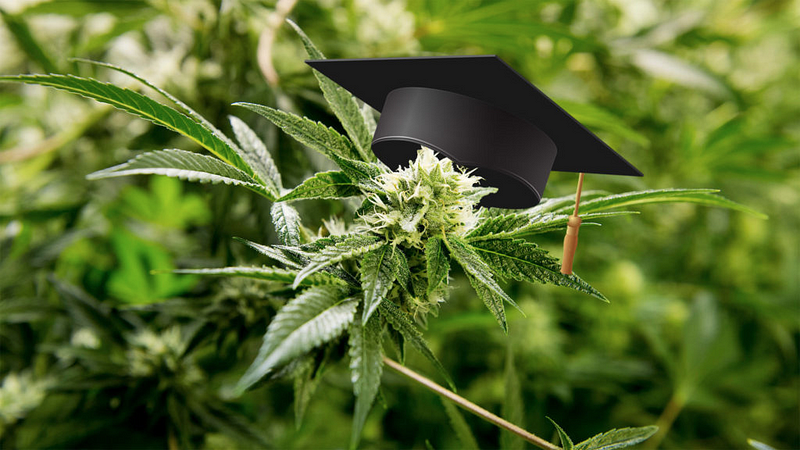
Finally, an accomplishment we can all revel in. For the release of their 2020 edition of “The Best 385 Colleges,”
The Princeton Review
surveyed 140,000 students across those schools and asked, “How widely is marijuana used at your school?”
If you do not remember filling out that survey, the pot must be screwing with your memory because we made it on the list. Ranked at #20, Hamilton’s got what
The Princeton Review
calls “Reefer Madness.”
For some, that ranking may come with no surprise; like it or not, marijuana is prevalent on campus. According to the “Summary of Code of Student Conduct Violations” for the past academic school year, the violation affecting the most number of students — drum-roll please — was “possession or use of marijuana.” And, if those two points weren’t bad enough, six of those 25 students received an additional three points for a second violation of the College’s drug policy on possession/use of marijuana. So, it’s either we — the student body — smoke a lot, or Campo has a thing for collecting confiscated grinders, rolling papers, and other “paraphernalia.”
Perhaps neither is the case. Marijuana, weed, pot, reefer, doobies, the devil’s lettuce, or whatever you prefer to call it, has been around for generations and has been perceived negatively throughout the years. So why do we get all the bad street cred?
According to a study conducted by the University of Michigan in 2017, 38 percent of full-time college students aged 19 to 22 reported using marijuana at least once in the prior 12 months, and 21 percent reported using it at least once in the prior 30 days. Both of these usage levels peaked in 2016 — the highest finding since 1987 — and did not change significantly in 2017.
The 2017 percentages instead represent gradual increases since 2006, when usage was 30 percent for “the last 12 months” and 17 percent for “the last 30 days.” This increase in usage more than likely parallels the decrease in the perceptions of risk from regular use. In 2017, only 27 percent of those aged 19 to 22 perceived regular use of marijuana as carrying great risk of harm. That percentage is the lowest it has been since 1980 — a year before the Reagan’s “Just Say No” drug campaign.
So there’s been an increase in smokers, but perhaps that’s a given when marijuana legalization is at the forefront of our political debate. The bigger question: is this really a bad thing?
Throughout the years, public perception of marijuana use has fluctuated — from two to six percent of the polled population thought drug use was the nation’s “number one problem” in 1985, while 64 percent said so in 1989, according to Drug Policy Alliance. This increase came from a number of different factors: the Reagan administration, draconian penalties in Congress and state legislatures regarding drug-related incidents, and the founding of the Drug Abuse Resistance Education (D.A.R.E.) program, to name a few. After 1989, however, the population seemed to lose interest, and the number saying drug use was the country’s number one issue decreased to 10 percent.
Currently, we are stuck in a tumultuous political climate where debates about marijuana can be the deciding factor for many voters. As more and more states legalize the use of marijuana — both medical and recreational — there will always be the perception of marijuana as harmful, mind-numbing, and a gateway drug. But, Hamilton potheads, fear not. We made that ranking, and we’ll wear that number proud.

















